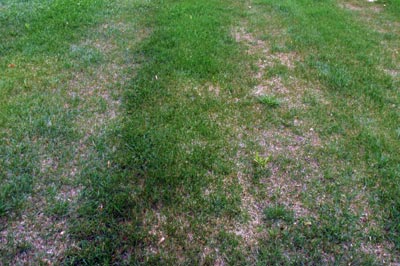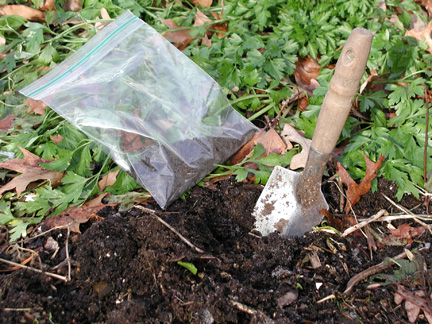Property owners have been enjoying lawns since as early as the 16th Century! The earliest lawns were grasslands around medieval castles in France and Britain and were used as a defensive mechanism so that hostile visitors could easily be spotted. At that time, chamomile and thyme were planted instead of grass. Grazing animals like sheep and cattle provided the necessary lawn care. A century later, wealthy landowners became far more particular about their lawns and used hired hands to scythe and weed the grass. A beautiful lawn became a true status symbol.
Today, we are much more likely to use our lawn for cookouts or a game of tag than to spot our enemy approaching from afar. But still, our yard is an important feature of our home,  and a well-maintained yard can spark feelings of envy in neighbors.
and a well-maintained yard can spark feelings of envy in neighbors.
If we want a lawn to be proud of when we begin enjoying the warmer weather in just a few weeks, now is the time to begin our spring yard maintenance. The experts recommend that homeowners begin spring maintenance after the last chance of a freeze or winter weather. (It may be hard to imagine right now but the first day of spring is only two weeks away!)
By putting in the work to prepare your yard now, you will better be able to enjoy your yard for the next several months. Here are a few maintenance tips for lawn care:
First up, raking. You may think raking is a fall activity, but that is not the case. Raking in the spring helps control thatch. (Thatch is the layer of dead turf grass between the soil and vegetation and includes stems, leaves, and roots.) This also helps you spot “snow mold” or matted patches of grass. Snow mold makes the growth of new grass difficult, but it is easily treated with raking.
 The next step is simply to check for compaction. If your lawn has high-traffic areas then it may be suffering from compacted soil. One indicator of compaction is the growth of moss. (If you have moss, there are plenty of DIY articles devoted to the eradication of it. We won’t get into that here, however.) If you do see signs of a compacted yard, then the best news is that you can wait until fall to treat the problem. Aeration, like overseeding, is recommended as fall maintenance for your yard.
The next step is simply to check for compaction. If your lawn has high-traffic areas then it may be suffering from compacted soil. One indicator of compaction is the growth of moss. (If you have moss, there are plenty of DIY articles devoted to the eradication of it. We won’t get into that here, however.) If you do see signs of a compacted yard, then the best news is that you can wait until fall to treat the problem. Aeration, like overseeding, is recommended as fall maintenance for your yard.
However, moss can also indicate soil acidity. A happy yard has soil with a neutral pH. The solution is lime. To check your soil’s acidity, send a soil sample to the local county extension office and they can test it for you. If they determine your soil is acidic, they will tell you how much lime you need, which is a helpful tool since soil that is too alkaline in nature (the opposite of acidic) is just as bad for your lawn.
Fertilizing is a lawn care must. If you’ve already fertilized heavily in the fall (which is recommended) then you should do a light feeding in the spring. Too much fertilizer in the spring can lead to weeds and disease. Fertilizing options include chemical fertilizers, or if you’d like a more natural approach, compost, and mulching mowers.
We all know weeds are evil. This is the time to plan your offensive attack with preemergent herbicides which can prevent weed seeds from germinating. Once you’ve applied your preemergent herbicide, keep a vigilant eye for the growth of any dandelions. You’ll want to pluck off their flowers before they produce seed, or even dig out their roots if you’re very ambitious. Post-emergent herbicides are best used for fall maintenance, but experts say if you spray in the spring, use a post-emergent herbicide for broadleaf weeds.
Now is also the time to consider getting a lawn mower tune-up. Did you know there are several tips on how best to mow your lawn, such as alternating the direction you mow every season? For more tips on the do’s and don’ts of lawn care, check out this article on landscaping.about.com.
We’ve been loving our lawns for centuries it seems. Here’s another interesting lawn care fact: It was between 1948 and 1952 that the first suburb named Levittown included pre-grown lawns when homeowners moved in. The Levitts, who developed the Long Island subdivision, felt so strongly about the lawns in their subdivisions that they stressed the importance of weed-free lawns to all homeowners and sent out newsletters with lawn care tips. (Read more about the history of the lawn in this article from Planet Natural.)
As we are all enjoying a warm day in our weed-free yards this summer, let’s take a moment and thank the Levitts for pioneering the yard as we know it today!
(Stay tuned this summer as we announce the winners of our "Yard of the Month" awards in our participating communities!)
From the Blog
Explore the latest and greatest news from Eastwood Homes.